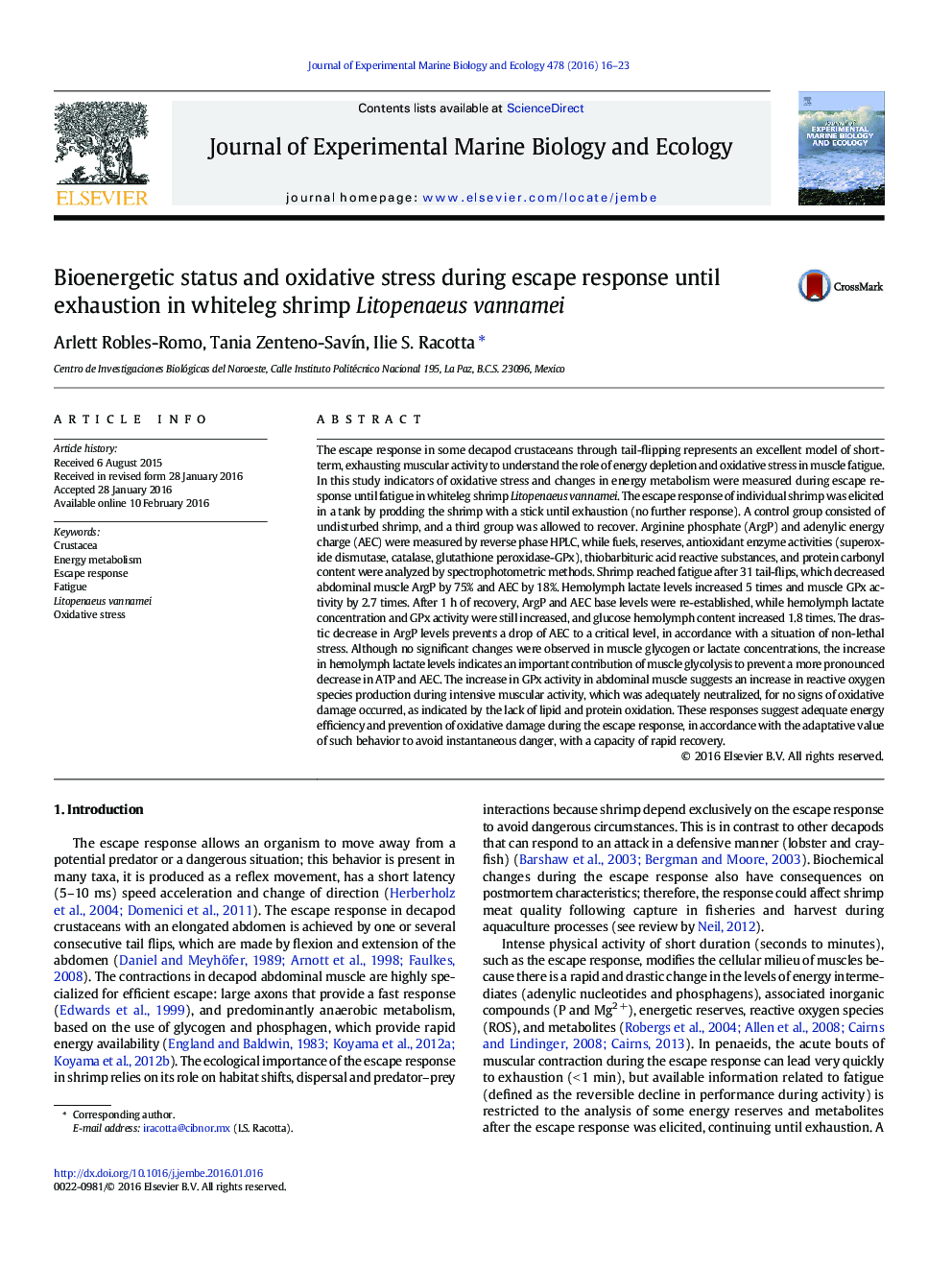| کد مقاله | کد نشریه | سال انتشار | مقاله انگلیسی | نسخه تمام متن |
|---|---|---|---|---|
| 6303771 | 1618397 | 2016 | 8 صفحه PDF | دانلود رایگان |

- Escape response Bioenergetics and oxidative stress of L. vannamei were studied.
- Escape response to exhaustion decreased energetic status and phosphoarginine levels.
- Escape response to exhaustion increased hemolymph lactate.
- After recovery the energetic status was reestablished and glucose hemolymph increased.
- Glutathione peroxidase activity increased after exhaustion and after 1Â h recovery.
The escape response in some decapod crustaceans through tail-flipping represents an excellent model of short-term, exhausting muscular activity to understand the role of energy depletion and oxidative stress in muscle fatigue. In this study indicators of oxidative stress and changes in energy metabolism were measured during escape response until fatigue in whiteleg shrimp Litopenaeus vannamei. The escape response of individual shrimp was elicited in a tank by prodding the shrimp with a stick until exhaustion (no further response). A control group consisted of undisturbed shrimp, and a third group was allowed to recover. Arginine phosphate (ArgP) and adenylic energy charge (AEC) were measured by reverse phase HPLC, while fuels, reserves, antioxidant enzyme activities (superoxide dismutase, catalase, glutathione peroxidase-GPx), thiobarbituric acid reactive substances, and protein carbonyl content were analyzed by spectrophotometric methods. Shrimp reached fatigue after 31 tail-flips, which decreased abdominal muscle ArgP by 75% and AEC by 18%. Hemolymph lactate levels increased 5 times and muscle GPx activity by 2.7 times. After 1Â h of recovery, ArgP and AEC base levels were re-established, while hemolymph lactate concentration and GPx activity were still increased, and glucose hemolymph content increased 1.8 times. The drastic decrease in ArgP levels prevents a drop of AEC to a critical level, in accordance with a situation of non-lethal stress. Although no significant changes were observed in muscle glycogen or lactate concentrations, the increase in hemolymph lactate levels indicates an important contribution of muscle glycolysis to prevent a more pronounced decrease in ATP and AEC. The increase in GPx activity in abdominal muscle suggests an increase in reactive oxygen species production during intensive muscular activity, which was adequately neutralized, for no signs of oxidative damage occurred, as indicated by the lack of lipid and protein oxidation. These responses suggest adequate energy efficiency and prevention of oxidative damage during the escape response, in accordance with the adaptative value of such behavior to avoid instantaneous danger, with a capacity of rapid recovery.
Journal: Journal of Experimental Marine Biology and Ecology - Volume 478, May 2016, Pages 16-23